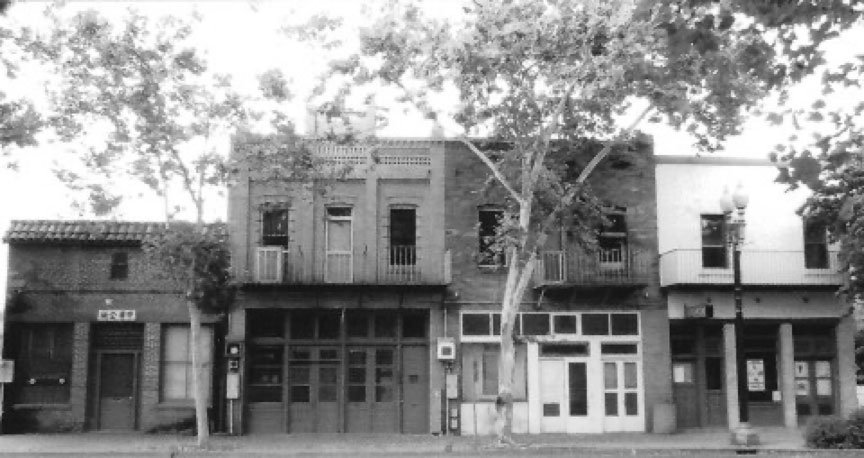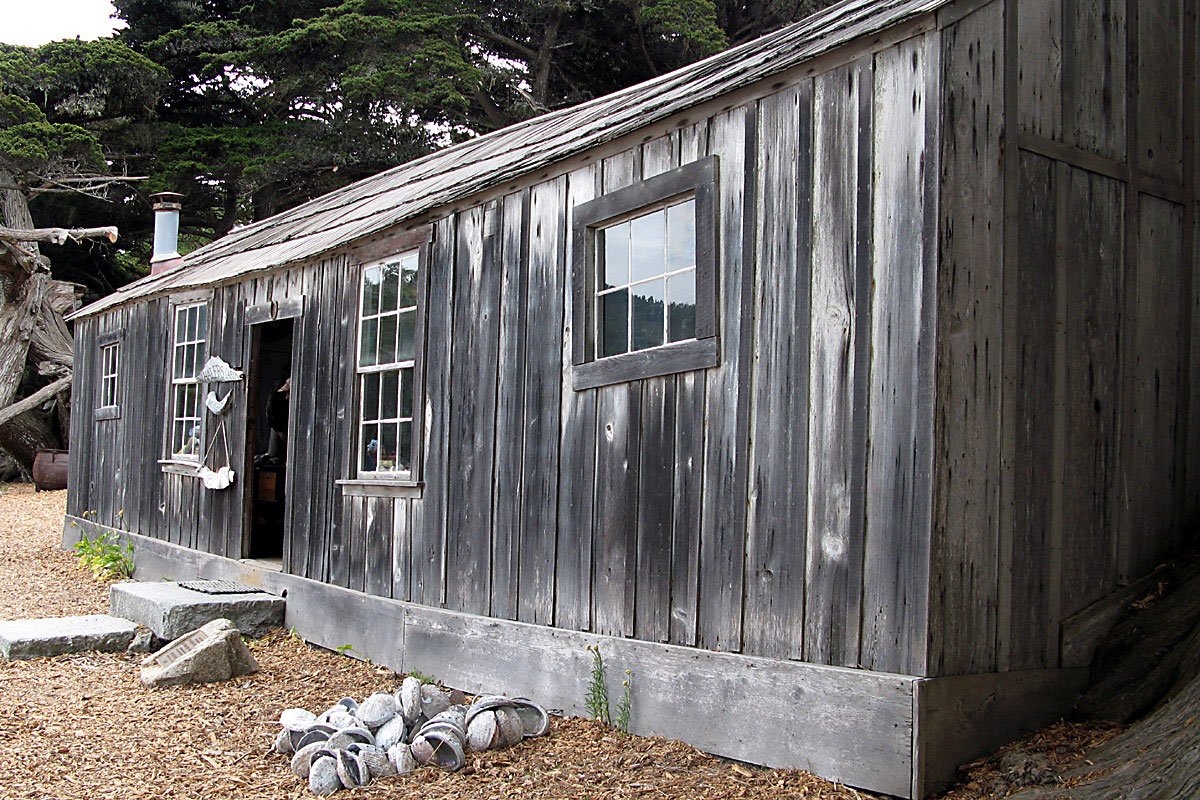
Chinese Heritage Trail
Learn more about other interesting Chinese heritage locations
Town of Locke
After the construction of the Transcontinental railroad, Chinese laborers were recruited to the Sacramento River Delta to build thousands of miles of levees. The river served as the main thoroughfare between San Francisco and Sacramento since the gold rush years.
The levees produced one of the most fertile land in the country. The Chinese laborers stayed to engage in farming. They lived in various towns throughout the Delta.
Forty years since the Chinese settled in the Delta, a neighboring town, Walnut Grove, burned down. A group of Chinese decided to build their own town, Locke. It is recognized as the only Chinese town that was built for the Chinese and by the Chinese.
The town was an overnight success, once bustling with every commercial need in the region including brothels, opium den and gambling halls.
Come witness this living Chinese town and its four museums, shops and restaurants. We are a National Historical Landmark on par with Golden Gate Bridge.
Bing Kong Tong project, Isleton
The Isleton Bing Kong Tong (BKT) was established in 1903 as an affiliate of the San Francisco Bing Kong Tong Benevolent Society by Toy Tue, a local merchant and mayor of Chinatown. Its purpose was to provide a place for meeting, worship and resolution of problems in the Chinese community. The Bing Kong Tong Association built the current structure at 29 Main Street in 1926 following a fire which leveled all the structures on Main Street. From 1933-1942 the 2nd floor served as a meeting place for the BKT and the 1st floor was a Chinese Language School for the children.
In the 1940s the BKT quit its operations in Isleton. In 1994 the San Francisco BKT deeded over the building (including its contents) to the Isleton Brannan-Andrus Historical Society. Since then, there have been an attempts to renovate the structure. Now these efforts have culminated in stabilization of its structure and exterior (completed in 2014) and its utilities interior (2020). During 2021 the collection will be moved in and the building will open as the Isleton
Museum. Address: 29 Main Street, Isleton, CA 95641
Mailing address is P.O. Box 933, Isleton CA 95641
Chan House, Chinese Heritage Museum, Folsom
The Folsom Historical Society is in the process of restoring an old house that was home to the Chan family in Folsom’s Historic District so that it can become the Folsom Chinese Heritage Museum. The project is dedicated to the experience of Chinese Americans and their impact on the history of Folsom and California.
The project plan includes a traditional Chinese Garden entryway into a museum exhibit that is being designed to foster empathy as an intentional outcome of the visitor experience.
For further information or to get involved, please contact
Jeff Ferreira-Pro at jferreirapro@att.net or 916-792-9438.
View their website: www.folsomhistory.org
The Chew Kee Store, Fiddletown
Museum and two other Chinese-related buildings from the late 1850s bear witness to a once vibrant Chinese community.
The Chew Kee Store, a unique rammed earth structure, began as a medicinal herb shop that also served as a home, occupied by Chinese residents from 1855-1965. Artifacts, furniture and red banners in the store are original, providing the earliest authentic example of how Chinese immigrants lived and worked in emergent California.
The Chew Kee Museum, operated by the Fiddletown Preservation Society, is open from April through October, Saturdays, noon-4:00 p.m.
Check website first: www.fiddletown.info
Joss House, Auburn
The Auburn Joss House was built in 1920 by Charlie Yue, replacing the original building which was destroyed by fire in the late 1800’s. Auburn had become a bustling town since the Gold Rush, and many Chinese immigrants flocked here and built a rich community.
The Joss House was built to educate children, provide a place of worship, and serve as a hostel for travelers who needed a place to stay. Today, it is an historic monument preserving the past for the future, protecting the ancestors’ legacy, and educating visitors about how Chinese customs and cultures helped shape this country.
Website: www.auburnjosshouse.org
Chinese American Museum of Northern California, Marysville
The Chinese American Museum of Northern California (“Museum”) is located in Marysville, 40 miles north of Sacramento. The Museum building dates back to 1858 and is located in the heart of the old Chinatown at the corner of 1st and C streets. The two main exhibits of the Museum are:
1. Chinese American History in Ten Easy Steps and
2. The Lost Chinatowns of Old California, Ghost Towns and Survivors. The Museum has co-authored four Arcadia Publishing books of historical photographs of old Chinatowns. It is open on the first Saturday of the month from 12 noon to 4 pm.
Website: chineseamericanmuseum.com
Chinese Historical Society of America, San Francisco
The Chinese Historical Society of America collects, preserves, and illuminates the history of Chinese in America by serving as a center for research, scholarship and learning to inspire a greater appreciation for, and knowledge of, their collective experience through exhibitions, public programs, and any other means for reaching the widest audience. When founded in 1963, there were fewer than 250,000 people of Chinese descent living in the US and CHSA was a lone voice for the study and dissemination of the history of this segment of the US population. Today, as the number of Chinese in the US has risen to over 5 million, CHSA strives to be a responsible steward of the remarkable narrative of this rapidly growing and increasingly visible community.
CHSA promotes the contributions and legacy of the Chinese in America through its exhibitions, publications, and educational and public programs in the Museum and Learning Center. We are housed in the landmark Julia Morgan-designed Chinatown YWCA building at 965 Clay Street, San Francisco. We offer tours of the Museum and the surrounding Chinatown community for a nominal charge. We have extended our reach with online content and online exhibits through our main portal chsa.org, sharing information and news through our Facebook, Twitter, and Tumblr, and sharing photographs through our Instagram. We have also opened our doors to collaborations with others who want to share their stories and experiences through film screenings, book readings, presentations, workshops, panel discussions and so much more.
Website: chsa.org
China Camp, San Rafael
Located along the shores of San Pablo Bay, China Camp was the site of a thriving Chinese shrimp fishing camp that dates back to the 1860’s. At its heyday, there was a vibrant Chinese community of more than 500 people living at the Village. The main business was drying shrimp and exporting to China.
The Village began to decline in 1882 with the Chinese Exclusion Act, followed by restrictive laws aiming at the Chinese shrimpers. They all left, except for the Quan family. Historic structures remain along the waterfront, including a museum with exhibits and interpretive displays about the history of the village and the shrimp fishing industry.
Website: friendsofchinacamp.org
Chinese Historical & Cultural Project, San Jose
Chinese Historical & Cultural Project of Santa Clara County, Inc. (1987), built the Chinese American Historical Museum, a replica 1888 Ng Shing Gung from the last San Jose Chinatown. CHCP hosts a Speakers Series with online webinars; a Student Docents & Cultural Ambassador Program (SDCAP; and the Lillian Gong-Guy Memorial Scholarship for graduating seniors. Collaboration between Stanford University, CHCP, and HSJ brings new information about the Chinese and Chinese Americans in Santa Clara Valley. Visit the museum virtually at www.chcp.org and more links to information about Chinese cultural celebrations and events. We look to the future to explain the past!
Website: chcp.org
Joss House, State Park, Weaverville
In the Small, historic mining community of Weaverville, the Weaverville Joss House is a vivid reminder of the Chinese Contribution to this part of California. Above the front door Chinese character in luminous gold translate to read,” The temple of the Forest Beneath the Clouds.”
Located 50 miles west of Redding on Highway 299, the Weaverville Joss House is the oldest continuously used Chinese temple in California. The Joss House is under the management of California State Parks www.parks.ca.gov 630 Main Street, Weaverville, CA 96093 Tel (530) 623 5284
Website: www.parks.ca.gov/?page_id=457
Walk of Remembrance, Monterey Peninsula
Gerry Low Sabado, a lone storyteller narrates the arrival of her Ancestors by Chinese junk to Point Lobos in 1851. Her family moved to Pescadero Point which is now in Pebble Beach. Her Ancestors subsequently established one of the largest Chinese fishing villages in America at Point Alones in Pacific Grove. They created a successful export market of dried shrimp, squid, and abalone to China. After the village being burned down in 1906 under a hostile sentiment of the locals, they then moved to the McAbee Beach Chinese Village which is on the now famous Cannery Row. There are currently exhibits of the Chinese presence at the Whalers Cabin in Point Lobos and at the Pacific Grove Museum of Natural History.
In addition, along the recreation trail in Monterey and Pacific Grove, there is an Early Chinese Fishermen educational marker at the site where the Chinese Village once stood. There is also the Jone Quock Mui historical marker near the Wave Street Studios along the recreation trail in Monterey near Cannery Row.
For more information: rsaturday@aol.com
China Alley, Hanford
The city of Hanford was established in 1877 when the Southern Pacific railroad constructed a new extension line through the San Joaquin Valley. After completion, many Chinese railroad laborers remained in the area to do farm work. They purchased land and began building houses and shops in an area that became Chinatown. The alley featured eleven historic buildings including restaurants, boarding houses, grocery stores, laundries, herb shop with reputable herbal doctors, gambling halls, a Chinese school and a Taoist temple
The Taoist Temple was built in the late 1870s, serving as a community meeting hall, temple, and hostel. In 1973 the China Alley Preservation Society was formed to restore the long inactive community center and the Taoist Temple Museum for cultural heritage. The Museum opened in 1982. It is listed on the National Register of Historic Places.
Unfortunately the museum suffered from an arson attack on a night of May, 2021. Restoration efforts are presently underway.
Website: www.chinaalley.com




















